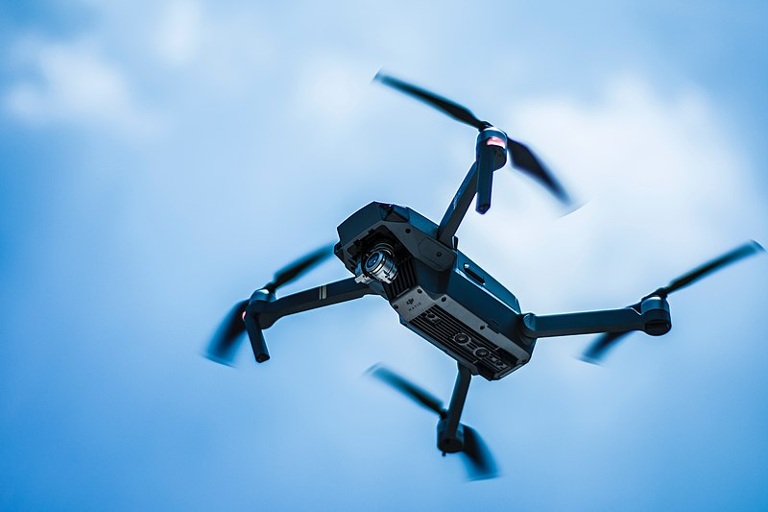Miniaturization is a signal advance in modern electronics. The slogan has been “smaller, faster, cheaper, better.” That has been the case for consumer electronics for decades. But parallel to the seeming benefits are dangers associated with packing ever more destructive power into smaller packages and simpler processes—not all of them electronic in nature.
One of the principles of government and society is the monopoly on force enjoyed by the government. In the abstract, members of society give up the right to use force against one another and agree to live by a set of rules enforced by the government. Law courts become a substitute for internecine warfare and gang violence in resolving disputes. Police become the enforcers of public order. But, in truth, it is the agreement among members of society to abide not only by laws and rules, but also by long-observed customs that facilitates peaceful coexistence which has the most importance.
In reality, the state has never had a complete monopoly on the use of force. There have always been groups or individuals who have challenged that monopoly for various reasons such as the commission of crimes, the resistance to government mandates, the overthrow of governments or the desire to set up one’s own independent state in a region currently controlled by the government.
All of these types of challenges are increasingly facilitated by technological advances that put more and more power into the hands of individuals and small groups. Naturally, existing governments seek to control technologies that transfer what they consider disruptive power that threatens the ability of the government to maintain public order.
A recent example is a bill introduced in the New York legislature which would require those buying 3D printers capable of producing firearms or firearm parts to undergo a background check. Prior to the advent of 3D printing, it would have taken considerable effort for an individual to produce even one gun, let alone many. In fact, it was generally a practical impossibility. The complex requirements for manufacturing firearms meant that only factories licensed and overseen (however loosely or stringently) by the government could produce arms. Now, an individual with a 3D printer can mass produce weapons. This could be merely a money-making enterprise or it could be part of a plan to arm groups as a prelude to violent action against civil authority. Wait until it becomes feasible to 3D print ammunition! Oh wait, it’s already happening.
But guns are probably one of the least effective ways to challenge civil authority. After all, police officers also carry guns. And, as much carnage as they inflict each year around the world, a single individual using a handheld weapon, even a very destructive one, is unlikely to bring down an entire government or even seriously erode the government monopoly on force.
But that is not the case for other weapons that are increasingly accessible to the public. I have previously discussed the “miniaturization” of drones. For years we’ve been reading stories about military drones being used to target people believed to be terrorists which the United States government wants dead. But drones are becoming increasingly cheap and are now available to anyone with a few hundred dollars. In theory these drones could be outfitted with explosives to do “targeted killing” on behalf of the owner. No more messy in-person murder. Individuals can now murder remotely. I cannot point to any such incident, but I believe it cannot be too far in the future.
Perhaps more disturbing would be the use of swarms of drones to attack people in public places as an instrument of terror or open warfare. That has already been contemplated in this seemingly realistic, but thankfully fictional video.
With two active wars now constantly in the news, we are seeing how drones are being used by large state actors, Ukraine and Russia, and small actors from something that cannot rightly be called a state, Gaza—proving the easy availability of these devices. (Yes, I know there are other wars going on.)
Some will say that anything can be turned into a weapon. That is likely true. But what I’m getting at is the amount of force that an individual or small group can now bring to bear. Keep in mind that such groups may not seek to “win” or control territory, but simply to disrupt. Those of us who want to live in a peaceful society may not have that choice if just a few individuals can disrupt public order with massive force.
The dangers I’ve mentioned so far are limited by an individual’s or group’s ability to manufacture and deploy the weapons discussed. But far more problematic are self-propagating weapons and the ultimate miniaturization of death, namely designer viruses. The problem with such viruses, of course, is that they can end up attacking the people who release them as a weapon. And, there is no clear way to get viruses to attack only certain groups of people. This is, in part, the result of the human genome being so utterly uniform across the world. According to the U.S. National Human Genome Research Institute “at the base-pair level your genome is 99.9 percent the same as all of the humans around you.”
But that won’t necessarily stop someone from using designer viruses as a way to make a twisted statement or sow chaos across the world. And, advanced gene editing techniques may be an easy way to engage in such design.
What would we as a global society have to do to prevent the spread of such weapons? It seems obvious that either the technologies behind them would have to be banned, that their availability would have to be tightly controlled, or that surveillance of those using such technologies would have to be somewhere near total. None of these solutions seem practical nor would they likely be acceptable to our technology-crazed society even if they were practical.
Governments used to worry about atomic bombs in a suitcase. Now they and the people who live under them have many more “miniaturized” threats to anguish over with likely many more to come.






